#6 September 1974
Text













The Contemporary Jewish Museum’s main building is the former Pacific Gas & Electric Jessie Street Substation, which was originally built in 1881 and was rebuilt in 1907 by Willis Polk after the 1906 San Francisco earthquake. The building was listed on the National Register of Historic Places on September 6, 1974.
#Contemporary Jewish Museum#Pacific Gas & Electric Jessie Street Substation#Willis Polk#National Register of Historic Places#Daniel Libeskind#6 September 1974#USA#summer 2017#travel#original photography#vacation#tourist attraction#landmark#architecture#cityscape#California#San Francisco#CJM#anniversary#US history
3 notes
·
View notes
Text

The XA Ford Falcon GT was released in March 1972 and ceased production in September 1973, and was the first Falcon GT to be available in a two door coupe. The XA was the first Australian built Falcon not to be based on a American design, and was almost completely designed in Australia. The XA Hardtop became the more preferred option to be used in Australian Touring Car Racing due to it's larger rear wheel arches for wider racing tyres. The XA GT Hardtop went on to achieve back to back wins at Bathurst with Allan Moffat and Ian Geoghegan in the 1973 Hardie-Ferodo 1000, and the 1974 Hardie-Ferodo 1000 with John Goss and Kevin Bartlett.Total produced: 1,868 Sedans and 891 Hardtops.Engine: 5766cc Cleveland V8 with overhead valvesCompression Ratio: 11.0:1Fuel System: Ford Autolite '4300' 605cfm 4 barrel downdraught carburettorPower / Torque: 224kW (300bhp} @ 5400rpm, 513Nm (380Ib-ft} @ 3400rpmTransmission: Four-speed manual, three-speed FMX automaticRear Axle: 9in removable carrier type, Limited Slip 'traction lock' Diff, 28 splineSuspension: Independent with coil springs, telescopic shock absorbers and anti-roll bar (front) Live axle with semi-elliptic springs, telescopic shock absorbers and anti-roll bar (rear)Brakes: Disc front 286mm (11.25in) Drum rear 254mm (10in) power assisted.Wheels:14 x 6 Steel - Argent painted Steel '12 Slot'.Tyres: ER70H14 RadialCurb weight estimated: 1585 kg / 3490 lbsPerformance: 0-100km: 7.2 seconds 0-400 metres: 15.4 seconds (manual sedan)Price when new for a 1973 XA Ford Falcon GT 5.8 Litre 351 V8 automatic two door Coupe: $6,648.00.

327 notes
·
View notes
Text
Stargate Character Birthdays
Ever wondered what Stargate characters' birthdays were? Or their zodiac signs? I offer you this:
SG-1
Daniel Jackson - July 8th, 1965 (Cancer)
Major Paul Davis - July 8th, 1969 (Cancer)
Sam Carter - December 29th, 1968 (Capricorn)
Jack O'Neill - October 20th, 1952 (Libra)
Teal'c - no date, 1899, though Chris Judge's birthday is October 13th (Libra)
Jonas Quinn - no date, but Corin Nemec's birthday is November 5th, 1971 (Scorpio)
General Hammond - no date, but Don S. Davis' is August 4th, 1942 (Leo)
Cam Mitchell - no date, but I was told that it was May/June, 1970 (Taurus or Gemini, depending)
Vala Mal Doran - no date, but Claudia Black's is October 11th, 1972 (Libra)
General Landry - October 6, 1945 (Libra)
SGA
John Sheppard - June 14th, 1970 (Gemini)
Rodney McKay - April 18th, 1968 (Aries)
Teyla Emmagan - no date, but Rachel Luttrell's is January 19th, 1971 (Capricorn)
Ronon Dex - no date, but Jason Momoa's is August 1st, 1979 (Leo)
Elizabeth Weir - October 14th, 1974 (Libra)
Evan Lorne - July 22nd, 1970 (Cancer)
Radek Zelenka - February 7th, 1967 (Aquarius)
Aiden Ford - no date, 1979, though Rainbow Sun Francks' is December 3rd (Sagittarius)
Richard Woolsey - no date, but Robert Picardo's is October 27th, 1953 (Scorpio)
Carson Beckett - January 5th, 1967 (Capricorn)
Jennifer Keller - no date, but Jewel Staite's is June 2, 1982 (Gemini)
SGU
Nicholas Rush - no date, but Robert Carlyle's is April 14, 1961 (Aries)
Everett Young - no date, 1968/1969, but Louis Ferreira's is February 20 (Pisces)
Matthew Scott - no date, 1983, but Brian J. Smith's is October 12 (Libra)
Tamara Johansen - no date, 1983, but Alaina Huffman's is April 17th (Aries)
Eli Wallace - no date, 1984, but David Blue's is January 17th (Capricorn)
Ronald Greer - no date, but Jamil Walker Smith's is August 20th, 1982 (Leo)
Chloe Armstrong - no date, 1986, but Elyse Levesque's is September 10th (Virgo)
Camille Wray - no date, but Ming-Na Wen's is November 20, 1963 (Scorpio)
David Telford - no date, between 1969-1974, but Lou Diamond Phillips is February 17th (Aquarius)
All dates were taken from the SGCommand Wiki!
85 notes
·
View notes
Photo






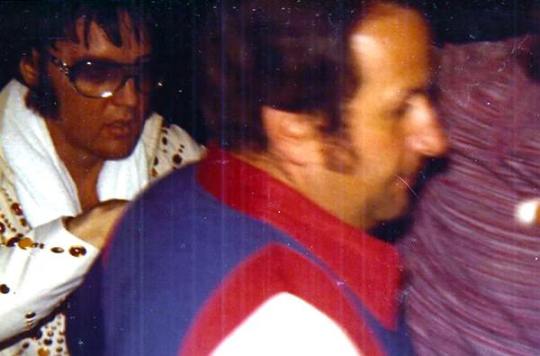
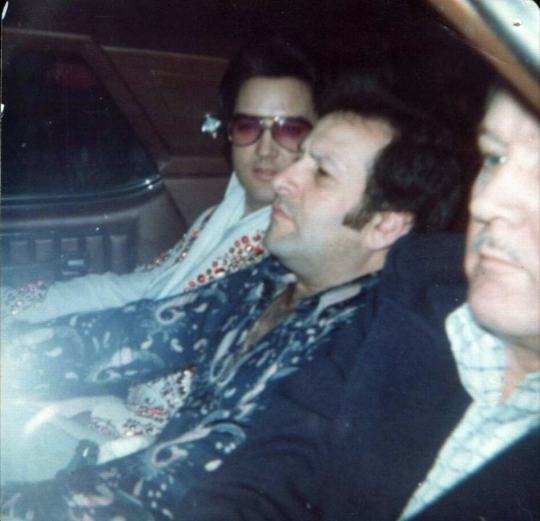


Assorted Pictures Of Elvis On Tour
1) Heading onstage for a concert in Tampa, FL, on September 13, 1970.
2-5) Elvis with fans after arriving at San Francisco airport for departure on November 15, 1970.
6) At the airport after Elvis’ Houston show in November 1971.
7) Elvis returns after the Atlanta concert on June 29, 1973.
8) Going to the afternoon show in Memphis, March 17, 1974.
9) Elvis in the Aqua Phoenix jumpsuit, on his way to perform at Swing Auditorium in San Bernardino on May 13, 1974.
10) Leaving the stage in Macon, GA on April 24, 1975.
176 notes
·
View notes
Text

BOOTLEGS 2023
The year is winding down, so it's time to look back at the last 12 month's crop of live tapes. Crowd noise, tape hiss, distortion, murk ... and plenty of magic, people! As I do this year after year, I ask myself: "Why do I do this year after year?" I guess it's a habit I can't break. But I do love something about these cloudy recordings — the immediacy, the imperfections, the possibilities. Each bootleg, no matter how lo-fi, contains a glimmer of hope, a potential for beauty and transcendence. The fact that not all of them (few of them, in fact!) really deliver on that promise is part of the deal. The search continues!
Anyhoo, here's a sampling of the Doom & Gloom goods from 2023 to get you caught up ... thank you to the tapers, the archivists, the fans, the innocents.
Sonic Youth - #SonicSummer (Live 1981-2011)
Mazzy Star - The Mint, Los Angeles, California, July 15, 1993
Television - Max’s Kansas City, New York City, August 28, 1974
The Flying Burrito Brothers - Altamont Speedway, Tracy, California, December 6, 1969
Damon & Naomi - Best Video Film & Cultural Center, Hamden, Connecticut, May 12, 2023
Sandy Denny + John Martyn - Sundown Theatre, London, England, October 26, 1972
John Fahey - Carnegie Hall, New York City, Sept. 21, 1973
Neil Young with Booker T. & The MG’s - Los Angeles Sports Arena, Los Angeles, California, September 11, 1993
Prairiewolf - Paradise Found Records, Boulder, Colorado, July 1, 2023
The Band - Wollman Skating Rink, Central Park, New York City, June 30, 1971
PJ Harvey - McCabe’s Guitar Shop, Santa Monica, California, September 25, 1993
Van Morrison - Harvard Square Theatre, Cambridge, Massachusetts, March 14, 1974
The Velvet Underground - The Playhouse, Edinburgh, Scotland, June 1, 1993 (Soundcheck)
Loose Fur - The Double Door, Chicago, Illinois, May 14, 2000
Stephen Malkmus - Mr. T’s Bowl, Highland Park, California, August 13, 1998
Yo La Tengo - The Grotto, New Haven, Connecticut, October 23, 1987
Jonathan Richman & The Modern Lovers - Town Hall, New York City, October 9, 1976
The Cramps - Toad’s Place, New Haven, Connecticut, February 20, 1992
The Dream Syndicate - Crystal Ballroom, Somerville, Massachusetts, September 18, 2022
Gram Parsons - Max’s Kansas City, New York City, March 9, 1973
Tom Verlaine - The Roxy, West Hollywood, California, October 17, 1981
Lou Reed & The Tots - Humpin’ Hannah’s, Milwaukee, Wisconsin, January 20, 1973
Elizabeth Cotten - Euphoria Tavern, Portland, Oregon, February 19, 1975
Sonny Rollins and his Jazz Ensemble - East River Park Amphitheatre, New York City, August 7, 1962
26 notes
·
View notes
Text

On September 8, 1974, American daredevil Evel Knievel attempted to jump over the Snake River approximately 1 mile (1.6 km) west of the Shoshone Falls on a rocket-powered motorcycle, the Skycycle X-2, after unsuccessfully petitioning the U.S. Government to let him attempt a jump over the Grand Canyon. Knievel and his team purchased land on both sides of the Snake River and built a large earthen ramp and launch structure. A crowd of 30,000 gathered to watch Knievel’s jump, which failed because his parachute opened too early, causing him to float down towards the river. Knievel likely would have drowned were it not for canyon winds that blew him to the river bank; he ultimately survived with a broken nose.



Evel Knievel 1974

Evel Knievel3

Evel Knievel Moto Vitelloni

Caesars Palace Jump

Daredevil Evel Knievel Crashes at Wembley Stadium - London, England, UK - May 26, 1975

Evel Knievel & Tony Hawk.

Evel Knievel 6

Evel Knievel 8
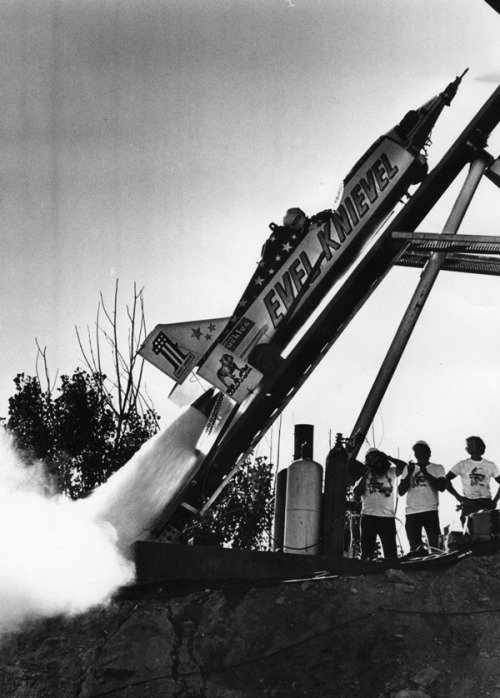
Evel Knievel 9

Evel Knievel, in 1966

Evel Knievel4

Ideal Toys Evel Knievel toy sets - 1976.

Las Vegas, Nevada. USA December 31 1967

The Wembley Jump 1
London, England 2


London, England 2



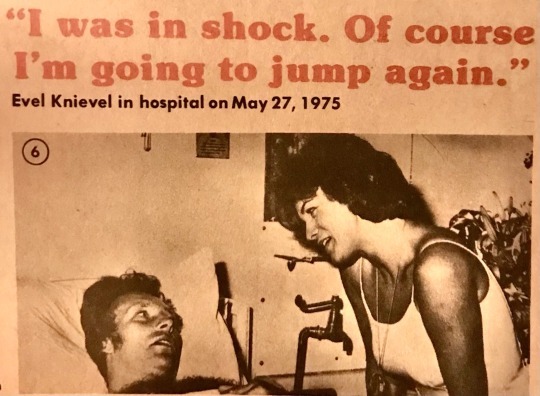





16 notes
·
View notes
Text
During Which Months Did Persona 1 And 2 Duology Take Place?
It’s well known among fans of the series that the later entries take place during an entire school year, however the same can’t be said about the earlier games. The only confirmed information about the time frame that P1 and P2 occur is the year, but dialogue present in these entries and the characters’ birthdays allow us to stipulate a more precise date of when they took place.
Before starting, it’s important to be aware of how the school year in Japan is divided (I’m not Japanese and all the information I got is from the internet. So if you are more familiar with the system, feel free to correct me or to just talk more about it): The academic year in Japan starts from April and ends in March, having summer vacation in August (normally going from July 20 to August 31) and winter vacation in the end of December to the beginning of January (normally going from December 26 to around January 6).
-Obs: All of the dates that I have just mentioned are related to 2023/2024. I wasn’t able to find anything about it in 1996 or 1999. So take them with a grain of salt.
Persona 1:
List of the main cast birthdays + their ages:
April 09, 1979 - Yukino - 17
June 04, 1979 - Maki - 17
July 11, 1979 - Mark - 17
August 18, 1979 - Reiji - 17
September 21, 1979 - Eriko - 17
October 02, 1979 - Nanjo - 17
December 24, 1979 (it's a complete nonsense) - Protagonist IN THE MANGA - 17
January 01, 1980 - Brown - 16
March 03, 1980 - Ayase - 16
Analyzing the age of the characters, it can be assumed that the game takes place at the end of 1996 since Nanjo is already 17 when it occurs. However, the birthday date of the protagonist in manga, generates some inconsistencies: if taking this date into consideration, the game would take place between December 24, 1996 and December 26, 1996 - since, after that, the winter vacation starts. It could be hypothetically possible for the game to only last two days, however, considering that there are two routes and that most people believe that P1 happened during a whole week, I’m ignoring this date. With this, we can conclude that:
Persona 1 Probable Time Period: Between October 02, 1996 and December 26, 1996
Persona 2 Duology:
List of the main cast birthdays + their ages:
April 09, 1979 - Yukino - 20
February 14, 1982 - Jun - 17
May 04, 1982 - Lisa - 17
June 13, 1967 - Baofu - 32
July 04, 1976 - Maya - 23
July 27, 1981 - Tatsuya - 18
September 21, 1979 - Eriko (P2:EP) - 20
October 02, 1979 - Nanjo (P2:EP) - 20
November 15, 1982 - Eikichi - 16
November 30, 1974 - Ulala - 24
December 30, 1973 - Katsuya - 25
-Obs: If you want to know why I only used July 27, 1981 as Tatsuya’s birthday while ignoring August 21, 1981 (present in the SMT Wiki) as a possible date, there’s this post explaining it.
Let’s begin with Innocent Sin. Besides the age of cast, there’s another variable that needs to be taken into account: when the Grand Cross happened. In real life, this event occurred on August 18 1999 and, while, in Eternal Punishment, many NPCs mentioned that the Grand Cross had passed during the summer, we can’t be sure if it happened during this specific date due to one small thing: rumors becoming true. It could be very plausible that the Grand Cross in IS took place in a different time because it was influenced by rumors, while, in EP, the actual Grand Cross occurred as normal. That being said, I’m using August 18 1999 as the day that this event happened (only because I can’t even think of another date) since I don’t believe that the creators would change it.
Well, we found out the period of when the game ended so finding when it began should not be that difficult, right?... Oh, is August 18 during the summer vacation in Japan? And are there characters attending class both during the beginning as well the end of the game? Well… things just got a little bit more complicated.
In front of this adversity, I have two prepositions. The first one depends on the assumption that the summer vacation in Japan used to happen during a different time frame in 1999 than the one we have now. With that, we can guess that the game starts around July 27, 1981 since Tatsuya would already be 18. On the other hand, the second one regards the vacation period of 1999 as the same one as the one of now. In this hypothesis, we can guess that the game began some time before July 20 as well that the Kasugayama School Festival happened on the last day of class. Personally, I’m putting the latter just because the former’s time frame is also included in it. With this, we can conclude that:
P2:IS Probable Time Period: Between July 12, 1999 and August 18, 1999
Finally, we can get into Eternal Punishment! After the many contradictions present in Innocent Sin’s time frame (Nyarly would be proud), discovering when EP takes place is going to be way easier and this is only possible due to the main cast’s birthdays along with their dialogue.
First of all, it’s been confirmed by the creator that EP occurred some months after the Grand Cross, more specifically, during the autumn 1999. With that, we can take a closer look into one dialogue said by Nanjo in Parabellum a bit before going into Mt. Iwato: “Ms. Amamo, he is still a minor. I do not feel it wise to bring him to this kind of establishment… NO, I’m not being tense!”. For those unaware, the drinking age in Japan is 20 years old. Based on that, Nanjo becoming tense could be interpreted as him being nervous since he’s just recently turned 20. With that, it’s possible to presume that the game takes place after Nanjo’s birthday.
Another series of dialogue to take into consideration are of Ulala’s. During the entirety of the game, she is always stressing out that she’s turning 25 soon which indicates that her birthday has still not passed. With this, we can conclude that:
P2:EP Probable Time Period: Between October 02, 1999 and November 30, 1999
And now, we can say that this analysis is finished! Remember that this is only a personal theory of mine, done only because I couldn’t find any posts exploring the subject. Feel free to discuss your own opinions on the matter and to correct any errors I’ve made.
#persona 1#megami ibunroku persona#persona 2#persona 2 innocent sin#persona 2 eternal punishment#persona series#can't believe that I just wrote my first big essay in my second language and that I'm posting something the internet after so many years#I think it's pretty obvious that I'm used to writing more formal pieces of work#and also what my favorite game in the series is#IS section got pretty big haha#man I love the original persona trilogy#my post
12 notes
·
View notes
Text
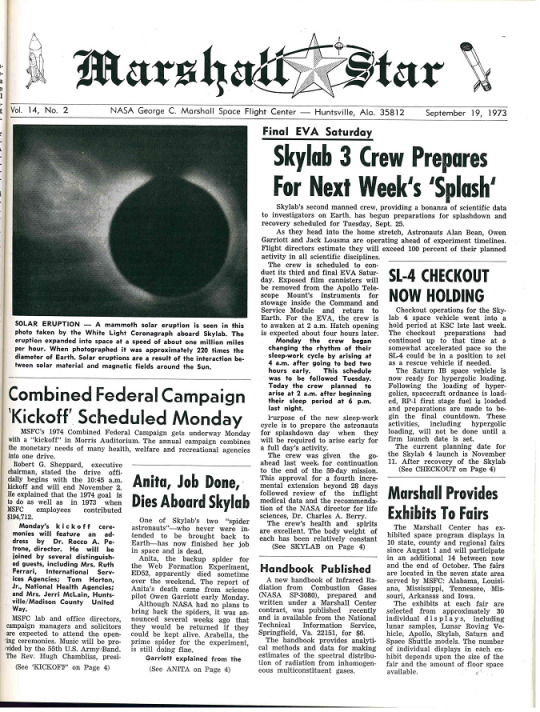
This edition of the Marshall Star from 1973, a newsletter of the George C. Marshall Space Center in Huntsville, Alabama, features an article titled “Anita, Job Done, Dies Aboard Skylab.”
The article goes on to explain that Anita was the back-up spider in the Web Formation Experiment. The primary spider, Arabella, was still alive at the time of the newsletter. Arabella’s current whereabouts are unknown.
Record Group 255: Records of the National Aeronautics and Space AdministrationSeries: Marshall StarFile Unit: Marshall Star Volume 14
Marshall Star Vol. 14, No. 2 . NASA George C. Marshall Space Flight Center -- Huntsville, Ala. 35812 . September, 1973 Final EVA Saturday Skylab 3 Crew Prepares For Next Week's 'Splash' Skylab's second manned crew, prvoding a bonanza of scientific data to investigators on Earth. has begun preparations for splashdown and recovery scheduled for Tuesday, Sept. 25. As they head into the home stretch, Astronauts Alan Bean, Owen Garriott and Jack Lousma are operating ahead of experiment timelines. Flight directors estimate they will exceed 100 percent of their planned activity in all scientific disciplines. The crew is scheduled to conduct its third and final EVA Saturday. Exposed film cannisters will be removed from the Apollo Telescope Mount's instruments for stowage inside the Command and Service Module and return to Earth. For the EVA, the crew is to awaken at 2 a.m. Hatch opening is expected about four hours later. Monday the crew becan changing the rhythm of their sleep-work cycle by arising at 4 a.m. after goint to bed two hours early. This schedule was to be followed Tuesday. Today the crew planned to arise at 2 a.m. after beginning their sleep period at 6 p.m. last night. Purpose of the new sleep-work cycle is to prepare the astronauts for splashdown day when they will be required to arise early for a full day's activity. The crew was given the go- ahead last week for continuation to the end of the 59-day mission. This approval for a fourth incremental extension beyond 28 days followed review of the inflight medical data and the recommendation of the NASA director for life sciences, Dr. Charles A. Berry. The crew's health and spirits are excellent. The body weight of each has been relatively constant (See SKYLAB on Page 4) SOLAR ERUPTION -- A mammoth solar eruption is seen in this photo taken by the White Light Coronagraph about Sklyab. The eruption expanded into space at a speed of about one million miles per hour. When photographed it was approximately 220 times the diameter of Earth. Solar eruptions are a result of the interaction between solar material and magnetic fields around the Sun. Combined Federal Campaign 'Kickoff' Scheduled Monday MSFC's 1974 Combined Federal Campaign gets underway Monday with a "kickoff" in Morris Auditorium. The annual campaign combines the monetary needs of many health, welfare and recreational agencies into one drive. Rober G. Sheppard, executive chairman, stated the drive officially begins with the 10:45 a.m. kickoff and will end November 2. He explained that the 1974 goal is to do as well as in 1973 when MSFC employees contributed $194,712. Monday's kickoff ceremonies will feature and address by Dr. Rocco A. Petrone, director. He will be joined by several distinguished guests, including Mrs. Ruth Ferrari, International Services Agencies; Tom Horton, Jr., National Health Agencies; and Mrs. Jerri McLain, Huntsville/ Madison County United Way. MSFC lab and office directors, campaign mangers and solicitors are expected to attend the opening ceremonies. Music will be provided by the 55th U.S. Army Band. The Rev. Hugh Chambliss, presi- (See 'KICKOFF' on Page 4)
Anita, Job Done, Dies Aboard Skylab One of Skylab's two "spider astronauts" --who never were intended to be brought back to Earth--has now finished her job in space and is dead. Anita, the backup spider for the Web Formation Experiment, ED52, apparently died sometime over the weekend. The report of Anita's death came from science pilot Owen Garriott early Monday. Although NASA had no plans to bring back the spiders, it was announced several weeks ago that they would be returned if they could be kept alive. Arabella, the prime spider for the experiment, is still doing fine. Garriott explained from the (See ANITA on Page 4)
28 notes
·
View notes
Text
Countdown to Halloween 2023, Ranked
43. Swamp Thing (1982)
42. Curse of Bigfoot (1975)
41. The Haunting (1999)
40. Orca (1977)
39. Teenagers Battle The Thing (1958)
38. The Beast (1975)
37. Don't Go in The House (1979)
36. Countess Dracula (1971)
35. Hillbillys in a Haunted House (1967)
34. Beware! The Blob (1972)
33. Alien Space Avenger (1989)
32. Baby Blood (1990)
31. Shriek of The Mutilated (1974)
30. The Mutations (1974)
29. Phase IV (1974)
28. Curse of The Faceless Man (1958)
27. The Sadist (1963)
26. Jennifer (1978)
25. The Wasp Woman (1959)
24. Noroi: The Curse (2005)
23. Girls Nite Out (1982)
22. The Monster of Piedras Blancas (1959)
21. The Cat and The Canary (1927)
20. Tell Your Children (Reefer Madness, 1936)
19. The Company of Wolves (1984)
18. It's Alive (1974)
17. The Wolf House (2018)
16. Michael Jackson's Halloween (2017)
15. The Girl Who Knew Too Much (1963)
14. The Omega Man (1971)
13. Gamera: Rebirth (2023)
12. Student Bodies (1981)
11. Night Caller From Outer Space (1965)
10. Inhumanoids (episodes 1 - 5, 1986)
9. Blind Woman's Curse (1970)
8. Maniac (1980)
7. The Child (1977)
6. Zombie 3 (1988)
5. Return of The Living Dead (1985)
4. Spider Baby (1967)
3. Basket Case (1982)
2. Messiah of Evil (1973)
Godzilla (1954)
Woof. Okay. This has been a mostly disappointing viewing experience.
Critical difference between this year's countdown and the past two is that now that I have stable employment, there is far less time to be watching horror films. I normally begin the countdown in September but we started in July of this year and still barely managed to crack 40, with my original goal being a full 100 this year. Timing. As such a lot of my plans and possible viewings were cut short and compared to last year specifically we fell back on a lot of "seen it already" at least for the top of the list.
This year's batch of viewings were largely blah, but a step up from the shitshow I put myself through last year (watching nearly every Texas Chainsaw sequel does things to a person). As such it'll be difficult to conjure up words for a decent chunk of these mostly because yes, these movies exist, I watched them, I would not recommend that you yourself watch them. That is all. If I write briefly on a given film that's not necessarily an indictment of its quality as there a decent number of these that I saw and enjoyed it's just their impact might be a bit fleeting. You will know which ones I actively disliked. I mostly just want to write about the top five or so but I will play fair.
Our grand loser this year is Swamp Thing, the DC Comics adaptation by Wes Craven. I watched this pretty much entirely because I finally got the Alan Moore Swamp Thing run in paperback this year after quite some time of having it on my to-buy list. Longtime Rachael/Ray/Ratchet fans may recall me reading it in early 2019 alongside [REDACTED]. Still one of the best Moore comics, and a second volume of Swamp Thing wouldn't have been possible without the success of this film. For context I did read the early Swampies by Len Wein and Bernie Wrightson and my general reaction to those was a'ight but there was definitely material for a serviceable film adaptation there. This is not that serviceable film adaptation. I'm not hung up on details like how Abigail has no connection to Arcane now despite being his niece in the comics, but this film is just kind of painful in how relatively unambitious it is which is saying something for Swamp Thing sword fighting another human mutation at the end of this. It's just silly and stupid and not scary or awe inspiring or anything, the Swamp Thing suit sucks, the action sucks, any sense of pathos is not there or gone, it stretches for 30 minutes too long like it's a padded TV pilot, the only highlight is being able to see Adrienne Barbeau's breasts. Fuck this it's a miserable experience to sit through. My mistake for watching a Wes Craven film that doesn't have "Scream" in the title.
Our next shitter is the two-for-one abomination that is Teenagers Battle The Thing (1958) and Curse of Bigfoot (1975); these are the same movie except Curse of Bigfoot has a 25 minute opening scene framing device that is bizarre given that "The Thing" of the original film is a Native American mummy of some sort unearthed by a group of white high school students. It's the rare personal pet project movie made for fun by some locals but the only highlights are the occasional kill scene, Curse of Bigfoot ranks lower just for making me sit through it longer. Blah.
Speedrunning through a bunch of these because theyre all varying degrees of bad and I don't want to spend any longer writing about these than you probably do reading about them: The Haunting is awful and I don't even super care for the original film so adding shitty CGI monsters and a moral lesson of "it's about family!" doesn't help. Orca is a shitty Jaws cash-in that's like a reverse Moby Dick where the sea animal hunts down the human, nice finale where the orca and shitty poacher guy are fighting it out in the Arctic but otherwise avoid. Don't Go in The House is a mysoginistic torture porn movie that really doesn't sell the "seemingly normal guy is a closet nutcase" thing even though movies made before and after have done it well (see Maniac several paragraphs below). The Beast is advertised as this really scandalous porno film but most of it is French aristocrats sitting around in stuffy rooms arguing about real estate. I think I only watched Countess Dracula for its inclusion in the "if this is her vibe I would fucking cum" meme and it's barely worth bringing up at all. Hillbillys in a Haunted House has an absolutely lovely Tennessee country soundtrack that I wish I could listen to without having to watch the actual movie which is devoid of both scares and laughs. Beware! The Blob gives off the feeling of sitting at a funeral for a family member that was just distant enough for you to be aware of them but not actually be upset but it's still a funeral so it's not like you're smiling, stick with the 1988 Blob film. Alien Space Avenger has some decent gore effects but that's all I can recall from it. Shriek of The Mutilated has one of the best titles for an otherwise uninspired yeti movie that has a needless third act twist about it being a cover for a cult and blah blah blah fuck you. Baby Blood has an alien mutant whatever crawl up a woman's vagina into her womb and she has to eat people to feed it and yeah I'm actually struggling to remember what happens here. The Mutations has a scene where a guy cuts into a tree and it bleeds, I think he's played by Donald Pleasance. Yeah, it's like Freaks except it plays to the freak show straight so you get to laugh at all the outcasts of society, no thank you.
Some odds and ends that I'd say are decent-to-pretty-good: Phase IV has some footage of ants and synth music. All you need is some footage of ants and synth music. Curse of The Faceless Man employs a rarely seen archetype of the living statue monster, it's cute. The Sadist is another starring vehicle for Arch Hall Jr., who was also the star of last Halloween's Eegah! (1962), though this film is a bold trendsetter for the 1960's with Hall being a unhinged killer holding people for ransom until they can fix his car and he can make a getaway. The film lives and dies by Hall's performance and it's mostly the latter until we get to an absolutely superb final act with him hunting down his remaining victims, it makes the whole film worth seeing. Jennifer is an oddball that plays out mostly like a character drama ("It wasn't my fault Daddy it was that stupid hillbilly bitch Jennifer") that suddenly remembers that it's supposed to be a cash-in of Carrie (1976) in the last 20 minutes and cue our titular character being able to summon and control snakes to send after her tormentors. Girls Nite Out is a plodding meandering slasher that's oddly hypnotizing considering so much of it takes place in pitch-black night and the killer is wearing a bear mascot costume with serrated knives hidden under the glove, not sure what fully to make of it. The Monster of Piedras Blancas is made up of leftover parts from the Gillman, Mole People, and Metaluna Mutant, but still manages to star in a decent enough film that gives a sense of what a series of monster attacks would do to a small seaside community. The Cat and The Canary is "cute" for lack of a better term being a horror comedy before the former genre had fully crystalized. Reefer Madness is horror adjacent more than anything but a hilariously good time about how the use of "marihuana" will drive today's youth into becoming crazed fiends and get involved in organized crime.
We can do this.
The Company of Wolves has an excellent story book like setting an atmosphere that you can't get in films nowadays and it's a shame that it's mostly remembered for its transformation sequences. it's Alive is the best Larry Cohen film by default of not sucking but it's still not "great", genius however for playing the concept of mutant newborn killer baby completely seriously without any sense of humor to the proceedings. The Girl Who Knew Too Much is almost a parody of giallo films which is interesting given those hadn't fully sprang up in 1963; absolute highlight is the main character being interviewed in bed by doctors and reporters and the like that yes she did see a murder and no she doesn't drink. I've always been fascinated and haunted by I Am Legend and while The Omega Man doesn't really capture the novel to a superb degree it's so beautifully shot that it lands high in the rankings for that alone. Night Caller From Outer Space is hilarious to me because of how it shifts halfway through from a Hammer-esque mystery about a meteorite with radioactive properties to a film about an alien that lures women in through a modeling advertisement. Blind Woman's Curse I've mentally confused with Irezumi for a while now (haha all 1960's Japanese genre films where woman have large animal tattoos on their backs are the saaame), and it's one I mostly watched for being directed by Teruo Ishii, but there's enough bloody yakuza fights and cats licking up blood for me to stick around; not the strongest Meiko Kaiji vehicle compared to Female Prisoner Scorpion or Lady Snowblood. Maniac I find mostly interesting as a precursor to American Psycho (2000) but also it's probably the only serious film to successfully pull off it's ending trope (which I will not spoil here). The Child is an absolutely lovely 1970's only-a-dozen-people-made-this-and-not-much-more-watched-it horror that oozes atmosphere, I could watch stuff like this all day. Aaand Zombie 3 is far and away the best film that Lucio Fulci has been involved with that I've ever seen. I love random scenes and set pieces of ghouls just massacring people that are shit out out of luck.
Okay, now for the ones I actually want to write about.
The Wasp Woman is one that sticks in my head way more than any other random monster movie that Roger Corman directed in the latw 1950's. I've said on here and Letterboxd that it could have served as a standard pop-feminist piece about how the cosmetology industry is built on misogyny and invariably a monster is accidentally created because of that, but this most recent viewing has made me sort of "get it" because that might be what the film is going for considering Susan Cabot's performance leads me to believe that she is aware that she is becoming a homicidal wasp monster but views it as a tragic means to an end where she still has the ability to have a new advertising campaign with her as the star. Tragic. This is why you don't wear make up.
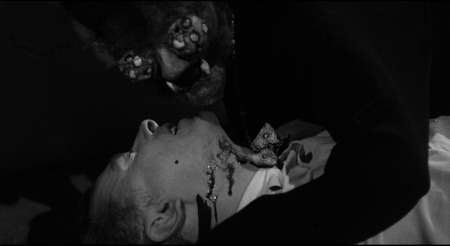
Both Noroi: The Curse and The Wolf House are ones I didn't care for whatsoever but I put them in places on the ranking that I thought were fair given that people should probably watch them regardless of my personal thoughts. Noroi's format didn't really lend itself to the escalation of tension and reveal of information that the plot demanded and I found myself thinking it meanders quite a bit. The Wolf House was an odd one where everything that was happening onscreen bounced off of me mostly because I felt intimately aware that I was watching a movie, that someone had made something and that I was now being shown it. Blah. People like these so don't let me stop you.
Our animated offerings this year...
Michael Jackson's Halloween more than anything feels like an unlicensed creation that later had an English fan dub commissioned, not something that actually aired on CBS twice. Any laughs that I found in this thing were the unintentional type as we open up with Bubbles talking and being Jackson's chauffeur; you know exactly what you're getting into. Very little of the plot is explained but I'm assuming Jackson (who has no lines given this was made posthumously) orchestrates a dark fantasy adventure to hook two...teenagers? People in their late 20's? And convince them to follow their dreams of performing instead of working a deadend dayjob. I'm not sure who the actual audience for this was given it feels like so much of it was made for children but I will say anything that has this much of Michael Jackson's music in it can't be all bad, though I'm not sure why they didn't largely stick with tracks from the album Thriller (in the contention for best album ever, I don't care).

Gamera: Rebirth is one I feel like I'm on the outside on compared to most other tokusatsu fans because I didn't really *love* to a serious degree even though, yes, Gamera is finally back. The first three episodes are mostly just kind of a slog for me with the backhalf not doing enough to retroactively make me think highly of it, though giving off End of Evangelion vibes may make me consider that a second viewing must be in order down the line. Rebirth's strongest attribute is that it feels like it takes into consideration and influence from every prior era of Gamera, no stone is left unturned, and it's a marked contrast from how every recent Godzilla property only captures a single facet of their respective character. But that also creates unique issues like how a lot of criticism of ongoing US military presence in Japan is undercut so there can be a white kid in the main cast (because white children were always present in half of the Showa series) or having the ancient civilization that genetically engineered the kaiju now being malicious and actively sacrificing children as a means of reshaping the world gives me vaguely anti-semitic tones, I don't know, Gamera is still here, I guess.
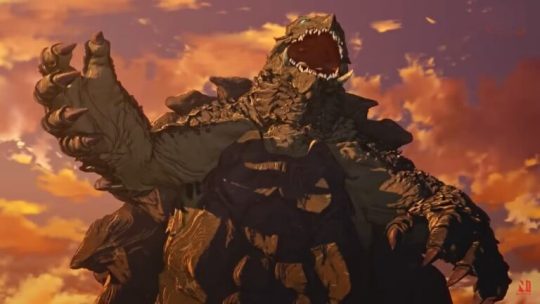
"I was just a little twerp who liked Scooby-Doo and Smurfs, now I was viewing Cthulhu mutants ruin the Earth."
Everyday that we have Inhumanoids is a gift. Inhumanoids is another Hasbro/Sunbow production like G. I. Joe, Transformers, or Jem and The Holograms, and it is truly tragic that it never got anywhere near that level of attention compared to its siblings. The fact that a 1980's action figure tie-in cartoon is named for its antagonists is only the start; the series follows a small paramilitary outfit of scientists named Earth Core that are tasked with more or less saving the world alongside the Mutores, elemental beings, when the Inhumanoids, eldritch abominations, are unleashed. The degree of world-building beyond your typical "good guys vs. bad guys" affair is astounding with villainous humans and virtuous monsters abounding, but Inhumanoids is mostly magical and remembered for saying fuck all to any type of broadcast standards. Seeing giant monsters destroy cities, undead armies, and spelunking deep into the Earth (where nightmares begin...) are just standard fair here, as are witnessing the actual Inhumanoids such as Metlar (basically the devil) or D'Compose (giant undead entity that can zombify people by touching them and uses his ribcage like a jail cell) in action. The first five episodes here are the pilot movie of sorts for the series which only lasted thirteen overall, and they get more grissly from here on out, but maybe it's best that Inhumanoids is the short lived cartoon and no the cartoon that went soft as early as its second season. I will never not love this show, to this day it's one of my favorite animated series from any decade, much less the 1980's.
Back to our regularly scheduled live-action programming...
Student Bodies is a fascinating film for a myriad of reasons the first of which is that there were somehow enough slasher films by 1981 for there to be a comedy poking fun at all the already established genre-cliches. It's essentially Scary Movie (2000) a full 20 years ahead of the curve only actually funny in spite of the subject matter frequently being as juvenile and prejudiced; but it also reminds me quite a bit of Scream (1996) with stuff like two killers working together. All I know is I was in for a decent time when the film opens with three identical shots of a house just with different framing text: "HALLOWEEN," "FRIDAY THE 13TH," "JAMIE LEE CURTIS' BIRTHDAY" and then the killer, The Breather, calls the opening kill girl doing nothing but breathing heavily, she hangs up, he calls back with "I SAID [heavy breathing]."
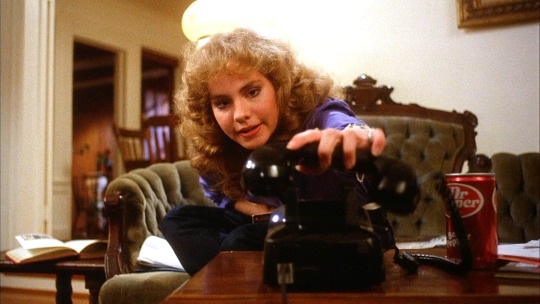
Return of The Living Dead is one of those films that should have destroyed the any artifically-imposed boundaries between "high" and "low" art. Every aspect of this film is brilliantly made, it just so happens to be made for stuff like Scooby-Doo music overlaid on top of thunderstorms over graveyards where one female character is stripping to the concept of dying. Media involving ghouls is incredibly oversaturated, and this was still the case in the 1980's where a film like this had to redefine the rules to make it so killing ghouls was basically a non-option. It only recently struck me on this viewing that that's the whole purpose of removing virtually all weaknesses they have, to keep the characters as the nail instead of the hammer. Compared to the Romero films, there's never a point where anyone is in control of the situation, it just escalates further and further until there is literally no way out. Taking that into consideration, there's no way this film couldn't have been a comedy that frames people getting swarmed and eaten by ghouls as hilarious.
The soundtrack and the faux-punk sensibilities lend this a daft feeling of "you shouldn't be watching this" in spite of it not being one of the MOST gory horror films of the 1980's. I still don't get how this never broke into the mainstream. I mean somehow people know that ghouls (in this film) speak and only eat brains but I can't go down to Target and get a Tarman action figure like I can one of Michael Myers. As such Return of The Living Dead remains a criminally overlooked film regardless of its subject matter. It's made me laugh and cringe and feel disgusted and revolt at the concept at dying but mostly it's made me feel a delicious sense of joy at seeing corpses rise out of the ground to the tune of "Do you wanna party? IT'S PARTY TIIIME!" Some of you need to sit in the corner and think about your life choices for making stupid shit like Re-Animator (1985) or fucking Shaun of The Dead (2004) more popular than this, fuck you.
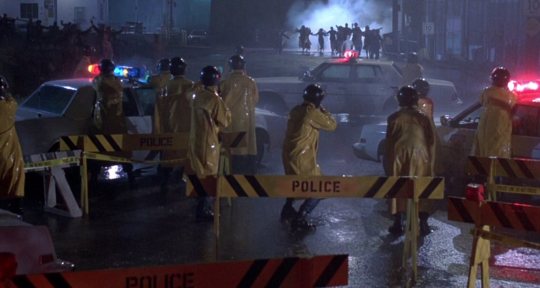
The act of watching Spider Baby is like discovering the missing link. For as much as 1960 gave us an explosion of horror (Eyes Without a Face, The Ship of Monsters, Psycho, Jigoku, Black Sunday, etc.) and Night of The Living Dead (1968) reins as the perennial transition point of the genre, Spider Baby is the road by which we go from The Cat and The Canary and The Old Dark House to the likes of The Texas Chainsaw Massacre and Eraserhead, it's magical finding an essential piece of a genre you love so much. Both the former and latter points of comparison are apt as a family of now only children [and their butler] suffering from Poe-esque hereditary illness have their condemned house set upon by distant relatives and everything slowly unravels.
Lon Chaney Jr. is an actor who for the longest time I felt never got a proper chance to shine wherein the last 25 years or so of his career was spent playing as side character actor in independent films. Spider Baby is his crowning achievement. Seeing him smile through almost tears on several occasions as he has to play bridge between worlds of sanity and madness and lie to everyone that he has some sense of control over the situation is brilliant in ways I always knew he was capable of but had never seen before this point. Bravo.
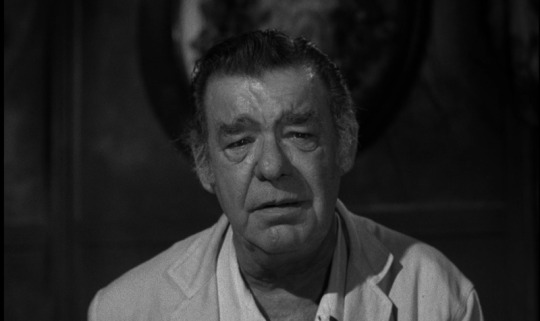
I will never not love Basket Case with everything I've got. This is the epitome of 1980's horror and my clear pick for best of the decade. It has everything from being a grungy putrid grindhouse spectacle to being an intimate character drama to everything presented through a wry ironic lense where you can't tell if any "bad" performances are all done on purpose. Between this, Brain Damage (1988), and Frankenhooker (1990), there is literally absolutely no reason why Frank Henenlotter shouldn't be more popular than Stuart Gordon, Brian Yuzna, and Lloyd Kaufman *combined*. It's tragic that the world of cinema being enclosed and captured by studios again in the late 1980's prevented us from getting more from him, but realistically could we ask anymore than what we already got from Basket Case? I could watch this every day and never grow tired of it. I will never stop making more and more people watch this.
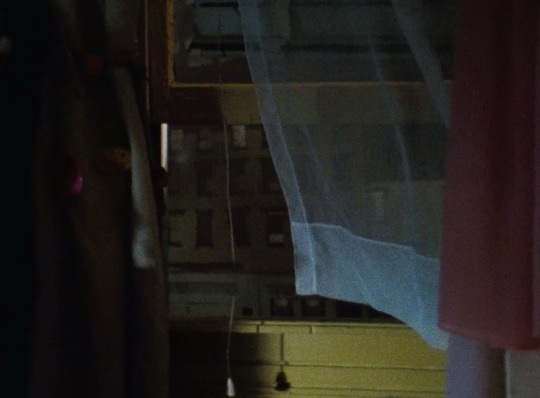
If Basket Case is the apex of 1980's horror, then Messiah of Evil is the same for 1970's horror. This is one of the most efficient horror films ever made in how not a single frame is wasted, the opening scene is literally a guy running from unseen force, seeking refuge, getting his throat slit, cue title card with synth music that then leads us to a sunburnt hallway as our narrator descends into acceptance of complete lack of control of the situation. Every night shot in this film must be 50 - 75% completely black with whatever headlight or store front there is just making the scenery look like a dollhouse that our characters are trapped inside. There's so many shots of people running away or walking down streets that make them look tiny as the camera is so far.
Every scene is an exercise in building up dread. There's no point where the film relents, something awful is not only coming, it's already here and there's nothing anyone can do. What I love particularly is that the mystery being laid out doesn't offer any answers because there's another mystery on top of what our characters find out only too late. Layers upon layers of dread that even the titular Messiah of Evil isn't the center of. The world is a cruel fucking place where this film languishes in obscurity whilst shit like The Exorcist enjoys mainstream attention. A lot of my taste amounts to "why isn't this thing I like more popular" and cases like Messiah of Evil vindicate me.
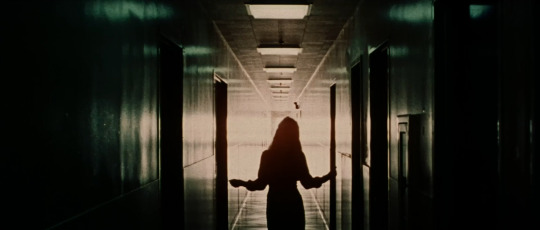
"Godzilla is the son of the atomic bomb. He is a nightmare created out of the darkness of the human soul. He is the sacred beast of the apocalypse." - Tomoyuki Tanaka
Generally a yearly trend is that a #1 pick for Halloween is self-evident to me and this year it was Basket Case for all of 30 seconds until I picked Godzilla back up.
There's something to be said how Godzilla isn't quite a horror monster? Terrifying but not necessarily creepy, but what power do things that go bump in the night have against the destruction of everything you know? Everytime I watch Godzilla is like the very first time, when flashing lights out at sea destroy fishing ships I have no idea what happened, or at least any much of a clue as anyone in film does when we're told that the entire ocean exploded.
Godzilla is a reptile, but lacks scales and its entire body is coated in keloid scars. In 1954 Godzilla must have been the largest monster every committed to film, trains are derailed from running against its ankle and bell and radio towers are throttled for being a sensory inconvenience. Godzilla's first on-screen appearance on Odo Island is obscured by a hurricane but the impression is clear; you can't fight Godzilla in the same way you can't fight a natural disaster. When Tokyo is reduced to complete ruin amidst a sea of flames, it's an onslaught of destruction never before seen in a film of this genre. Survivors being afflicted with radiation poisoning shows that Godzilla will claim victims long after being driven back to sea.
There's a sheer apocalyptic dread to all of this sensed by all the characters. Love tries to exist on the edge of annihilation. There's nothing that can be done but persevere and maybe hope tomorrow will be better. A scene that always strikes me is when Serizawa is adamant about not using the Oxygen Destroyer until forcibly confronted with the results of one night of Godzilla making landfall in Japan. The absolute pain felt by everyone in the finale starts here, things couldn't play out any differently as the "scientist of the century" can't join in and celebrate his victory.
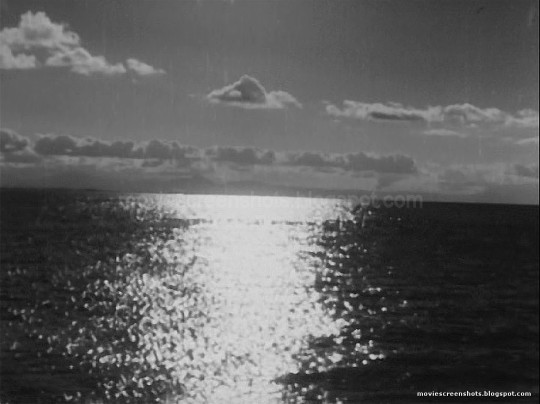
Godzilla is a rare perfect film. I will never tire of it.
25 notes
·
View notes
Text
Sombre et Pur'
I wanted to make a masterlist for my fic <3
I have about 8 more chapters written, I just don't wanna post them if no one is interested in this <3
#regulus black#regulus deserved better#regulus being a little shit#sirius and regulus#regulus black x hufflepuff reader#regulus black x oc#regulus black x reader#regulus black x you#regulus x you#regulus x reader#regulus x oc#original character#the marauders era#the marauders
13 notes
·
View notes
Text
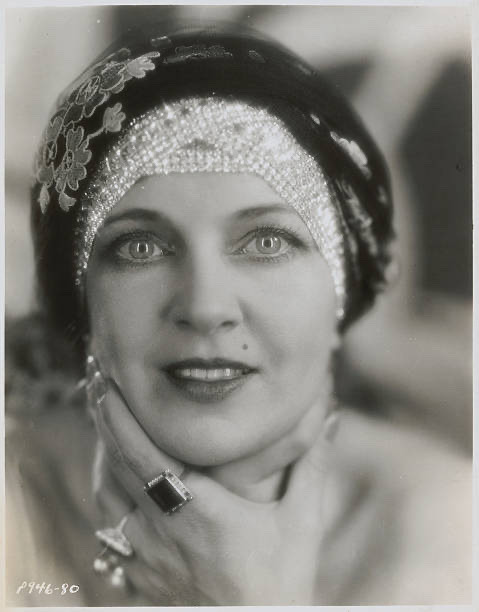
Olga Baklanova (August 19, 1893 – September 6, 1974)
32 notes
·
View notes
Text
Kismet Characters & Family Trees Part Nine:



Draco Malfoy (5 June 1980) SLYTHERIN m. Astoria Malfoy (7 December 1981) SLYTHERIN (2004) m. Circe Castellanos (4 August 1990) RAVENCLAW (2040):
1. Scorpius Hyperion Malfoy (6 January 2006) SLYTHERIN m. Albus Potter (1 June 2006) SLYTHERIN (2031):
a) Lyra Astoria Malfoy (1 June 2037) RAVENCLAW
b) Celeste Ginevra Malfoy (5 March 2039) RAVENCLAW
c) Archer Kai Malfoy (6 July 2044) SLYTHERIN
Alexandros Castellanos (1915) m. Diana Ioannou (1917) (1945):
1. Acheron Castellanos (1949) m. Athena Katsaros (1953) (1974):
a) Adara Athena Castellanos (1975)
b) Alida Althea Castellanos (1978)
c) Alexandros Acheron Castellanos (1983)
d) Archer Alexander Castellanos (1985)
2. Aristokles Castellanos (1952) m. Vanessa Addams (1956) (1976):
a) Eros Alexandros Castellanos (1978)
b) Desdemona Eustice Castellanos (1978)
c) Adam Aristotle Castellanos (1982)
d) Thaddeus Aristokles Castellanos (1985)
e) Zora Vanessa Castellanos (March 1986)
3. Adonis Castellanos (1955) m. Atlas Creed (1961) (1993):
4. Apollo Castellanos (17 February, 1959) m. Medea Gataki (1960) (1983):
a) Daphne Grace Castellanos (7 November, 1989)
b) Circe Althea Castellanos (4 August 1990) m. Draco Malfoy (5 June 1980) (2040):
i) Scorpius Hyperion Malfoy (6 January 2006) SLYTHERIN m. Albus Potter (1 June 2006) SLYTHERIN (2031):
aa) Lyra Astoria Malfoy (1 June 2037) RAVENCLAW
bb) Celeste Ginevra Malfoy (5 March 2039) RAVENCLAW
cc) Archer Kai Malfoy (6 July 2044) SLYTHERIN
5. Althea Castellanos (15 September, 1962) m. Alexander Papakonstaninou (1947) (1989):
a) Nilo Alexander Papakonstantinou (7 February, 1991)
b) Niko Alexander Papakonstantinou (7 February, 1991)
c) Nicholas Phoenix Papakonstantinou (12 April, 1992)
d) Basil Kai Papakonstantinou (17 August, 1994)
e) Bryony Iliana Papakonstantinou (17 August, 1994)
f) Calla Gallina Papakonstantinou (1 September, 1995)
Thanks to @ellieoryan7447 for taking the time and effort to create these!
#harry potter fanfiction#breanie#the world of asc#the kismet trilogy#the kismet trilogy by breanie#characters and family trees
13 notes
·
View notes
Photo
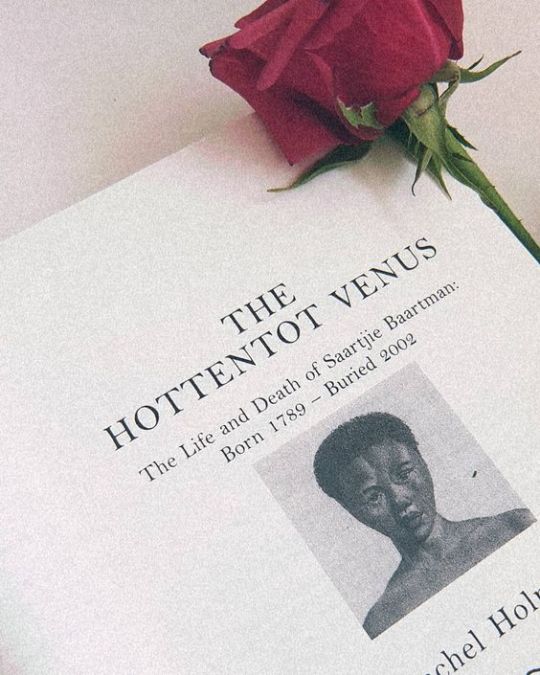
Saartjie (Sara) Baartman was one of the first black women known to be subjugated to human sexual trafficking. She was derisively named the “Hottentot Venus” by Europeans as her body would be publicly examined and exposed inhumanly throughout the duration of her young life. Moreover. her experience reinforced the already existing and extremely negative sexual fascination with African women bodies by the people of Europe.
Sara Baartman was born in 1789 at the Gamtoos River, now known as the Eastern Cape in South Africa. Baartman and her family were members of the Gonaquasub group of the Khoikhoi. Baartman grew up on a colonial farm where she and her family most likely worked as servants. Her mother died when she was aged two and her father, who was a cattle driver, died when she was still a young girl.
By her teenage years Baartman married a Khoikhoi man who was a drummer. They had a child together who died shortly after birth. When Baartman was sixteen, her husband was murdered by Dutch colonists. Soon after, she was sold into slavery to a trader named Pieter Willem Cezar, who took her to Cape Town where she became a domestic slave to his brother, Hendrik. On October 29, 1810, although she could not read, 21-year-old Baartman supposedly signed a contract with William Dunlop, a physician, who was a friend of the Cezar brothers.
This contract required her to travel with the Cezar brothers and Dunlop to England and Ireland where she would work as a domestic servant since technically slavery had been abolished in Great Britain. Additionally, she would be exhibited for entertainment purposes. Baartman would receive a portion of earnings from her exhibitions and would be allowed to return to South Africa after five years. However, the contract was false on all details and her enslavement continued for the remainder of her life.
Baartman was first exhibited in London in the Egyptian Hall at Piccadilly Circus on November 24, 1810. Her public treatment, however, quickly drew the attention of British abolitionists who charged Dunlop and the Cezars with holding Baartman against her will. The court ruled against Baartman after Pieter Cezar produced the contract that had been signed by Baartman. Baartman also testified that she was not being mistreated.
The publicity generated by the court trial increased Baartman’s popularity as an exhibit. She was taken on tours throughout England and by 1812 as far away as Limerick, Ireland.
In September 1814, after staying four years in Great Britain, Baartman was taken to France and sold to S. Reaux, an exhibitor who showcased animals. He put Baartman on public display in and around Paris, often at the Palais Royal. He also allowed her to be sexually abused by patrons willing to pay for her defilement. Reaux garnered considerable profit due to the public’s fascination with Baartman’s body.
Sara Saartjie Baartman died in Paris on December 29, 1815 at the age of 26 for unknown reasons. Even after her death, many of her body parts would go on display at the Musée de l’Homme (Museum of Man), in Paris to support racist theories about people of African ancestry. Some of the body parts remained on display until 1974.
In 1994 South African President Nelson Mandela formally requested that Baartman’s remains be returned to South Africa. On March 6, 2002, her remains were returned and buried at Hankey in the Eastern Cape Province.
71 notes
·
View notes
Text
OTD in 1901, Princess Alice, Duchess of Gloucester was born in Montagu House, London ✨️

Alice Christabel Montagu Douglas Scott was born on Christmas Day 1901 as the third daughter and fifth child of John Montagu Douglas Scott, Earl of Dalkeith and his wife, the former Lady Margaret Alice "Molly" Bridgeman, daughter of the 4th Earl of Bradford.
Lady Alice married Prince Henry, Duke of Gloucester, on 6 February 1935 in the Private Chapel at Buckingham Palace. A much more elaborate wedding was originally planned at Westminster Abbey but after the bride-to-be's father died of cancer on 19 October 1935, and due to the King's failing health, it was decided that the wedding should be reduced to a more private one. The Duke and Duchess of Gloucester later had two children, Prince William and Prince Richard of Gloucester.
The new Duchess of Gloucester had many activities, one of which was the launch of HMS Gloucester on 19 October 1937. From 1945 to 1947, the Duke and Duchess of Gloucester lived in Canberra, where the Duke served as Governor General of Australia.
In 1972, she lost her eldest son, Prince William, who died at the age of 30 in a plane crash while participating in an amateur air show competition. Her husband, the Duke of Gloucester, died on 10 June 1974 at the age of 74.
On 21 August 2003, Princess Alice surpassed the Queen Mother's record as the oldest person in the history of the British royal family by reaching the age of 101 years 238 days. On 20 September 2003, at the age of 101 years and 269 days, she was certified by Guinness World Records as the longest-lived royal of all time, surpassing Leonilla, Princess of Sayn-Wittgenstein-Sayn.
Princess Alice died on 29 October 2004 in her sleep at Kensington Palace, aged 102 years and 309 days. She was buried next to her husband, Prince Henry, and eldest son, Prince William, at the Royal Burial Ground at Frogmore.
#princess alice#duchess of gloucester#lady alice montagu-douglas-scott#prince henry#duke of gloucester#prince william of gloucester#prince richard duke of gloucester#the gloucester#british royal family#royal family#on this day
17 notes
·
View notes
Text
I found this document called "The Asexual Manifesto" and thought it was interesting in how it addressed asexuality amongst women in some 1970s feminist groups:
The Asexual Manifesto (1972) was recently found by Caoimhe Harlock on Twitter. It is available as a pdf. I have transcribed it below for better accessibility. The format mimics the original, except for the placement of the footnote on the first page. The Asexual Manifesto was also excerpted in Shere Hite’s book, Sexual Honesty (1974); I have separately transcribed the excerpt and noted what was left out. Feel free to use this in any way.
--Siggy, 6/22/2019
I wrote an article explaining some of the context of the Manifesto. --Siggy, 8/9/2019
The Asexual Manifesto
Lisa Orlando, Asexual Caucus, NYRF *
* In September 1972, the Co-ordinating Council of New York Radical Feminists formed caucuses based on similarity of sexual orientation. Each caucus was to explore its members' personal and political attitudes about their sexuality and communicate these views to the larger group. Barbie Hunter Getz and I realized that we would not feel comfortable in any of the proposed caucuses (heterosexual, Lesbian, bisexual) and formed our own. Out of this caucus came a paper of which the “Asexual Manifesto” is a revision. That the paper’s plural form has been retained does not imply that all the views expressed in this final version necessarily reflect the views of both the original co-authors.
I. Origin and Definition.
Our experiences with sexuality have not been congruent with our feminist values. As our consciousness became raised on this issue we began to see how sex had permeated our lives and the lives of others. We categorized our relationships in terms of sex ----- either friends or lovers. We engaged in a "sizing up" process, however subtle or subconscious, with each new person, accepting or rejecting her/him as a possible sexual partner even if we never intended to become sexually involved. We arbitrarily rejected whole groups of people as unsuitable for intimate relationships because we assumed that such relationships, by definition, necessarily included sex. Often we chose to spend time with people simply on the basis of their sexual availability (the “bar scene”). As we became aware of this in ourselves, we became painfully aware of how we were being objectified by others.
Asexuality is an outgrowth of this consciousness. It is a concept we have come to employ out of the wish to communicate ----- not merely through being but also through language ----- our struggle to rid ourselves of sexism in our personal lives.
In this paper we have used the terms “sex” and “sexual” to describe any activity one goal of which is genital excitation or orgasm. Physical affection and sensuality (including kissing) are not, by this definition, sexual unless they are directed towards the goal of genital excitation.
We chose the term “asexual” to describe ourselves because both “celibate” and “anti-sexual” have connotations we wished to avoid: the first implies that one has sacrificed sexuality for some higher good, the second that sexuality is degrading or somehow inherently bad. “Asexual”, as we use it, does not mean “without sex” but “relating sexually to no one”. This does not, of course, exclude masturbation but implies that if one has sexual feelings they do not require another person for their expression. Asexuality is, simply, self-contained sexuality.
II. Philosophy
Our philosophy of asexuality grew out of our personal ethics, which have been reshaped by our feminist consciousness. To us, as to many other women, feminism means more than the fight against sexism. It means "sisterhood" ----- a new way of relating, perhaps a new way of life. Feminist morality, at this stage in history, can only be defined as antithetical to the oppressive values of our society (e.g., competition, objectification). On a personal level, it is reflected in our beliefs that: we should attempt to relate to others in their totality as much as possible and not view them as objects existing for the gratification of our needs; we must not exploit others ----- that is, use them “unjustly or improperly” ----- nor allow ourselves to be exploited; we must not be dishonest with ourselves or those we respect. In addition, we believe that we each have the responsibility for examining our behavior, determining how it has been affected by sexist conditioning, and changing it if it does not meet our standards.
As feminists we had decried the sexual exploitation of women by men without seeing that we too had used others “unjustly and improperly”. Interpersonal sex is not an instinctive behavior pattern; it is behavior we have learned to use for the satisfaction of a need (for orgasm) which we can easily satisfy for ourselves. We came to see this use of others as exploitative and realized that in allowing others to use us in this way we were acquiesing in our own exploitation.
In our attempt to be honest with ourselves, we tried to determine what our real needs are. We saw that we have needs for affection, warmth, skin contact, which we had been taught to satisfy through interpersonal sex. As we began to satisfy these needs in our "friendships," our need for and interest in sex diminished. We also realized that we had a need for intimacy, a state we had always seen as "completed" by sex. In retrospect, we realized that we, and others, had used sex as a means of self-deception, as a way of avoiding real closeness rather than achieving it.
We had struggled against our conditioning in many ways, especially in terms of roles, but we had avoided examining the basic conditioning which had shaped our sexuality. It is difficult even to speculate on the nature of "ideal sexuality" (uninfluenced by sexism) but we are certain that it would not occupy as much of our lives as it does in this society. We live in a culture of "fetish-worshippers" who regard sex with an extreme and irrational amount of attention. Just as many of us were conditioned to direct our energy into the preparation of lavish meals, creating a fetish out of a simple need to avoid confrontation with the emptiness of our lives as women, so we were conditioned to seek sexual satisfaction in convoluted and circuitous ways. Since our involvement with feminism, our lives have been increasingly meaningful and we no longer feel the need for fetishes.
In examining our experiences relative to our values, we have come to asexuality as a stand and a state of being concurrently. Interpersonal sex is no longer important to us, no longer worth the distorted and often destructive role it has played in relationships. It no longer defines our relationships or in any way constitutes our identities. As asexual women, we do not (1) seek, initiate, or continue relationships in order to experience interpersonal sex, (2)use others for the satisfaction of our sexual needs or allow ourselves to be so used, (3) attempt to satisfy other needs (e.g. for affection, warmth, intimacy) through interpersonal sex, or (4) perceive others according to their potential, or lack of it, as sex partners. In essence then, our asexuality reflects a rejection of interpersonal sex as long as it cannot meet our conditions: that it be both congruent with our values and totally incidental and unimportant to our relationship.
III Politics
Basic to the liberation of women is the destruction of sexism, one manifestation of which is the sexual exploitation of women by men. Asexuality is a step towards achieving this goal at the personal level, as it eliminates one means by which men oppress us. Through our asexuality, we have excluded sex as a goal and, essentially, even as a possibility in any relationships we may happen to have with men.
Because of the patriarchal culture which has resulted from institutionalized sexism, the exploitative behavior, standard in such a culture, has made it extremely difficult for women to realize their own independent, more humane style of relating. Most women consequently reflect, in their relationships with each other, some of the exploitative behavior patterns characteristic of our male oppressors. One area where the oppression of women by women may occur is, again, the sexual; this oppression too must end before we can be truly free. Through asexuality, we have rejected sex as a goal in our relationships with women, thus avoiding the sexual objectification, exploitation, and oppression of our sisters. Here too, we reject any possibility of sex unless our conditions are met, and we thereby prevent ourselves from being sexually exploited and oppressed.
To destroy a particular culture’s basic myths is to undermine its very foundations. Patriarchal culture, based as it is on sex differentiation, has constructed some of its strongest myths around sexuality. We believe it is of prime importance that feminism direct itself to the exposure and destruction of the current patriarchal mythology which, through deception, reinforces our oppression. Those myths most responsible for the distorted role sex plays in women's lives are:
Interpersonal sex is essential since the sex drive is a powerful force in human life and, if unsatisfied (through interpersonal sex), tends to produce unhappiness or possibly illness,
It is important that any sexual excitation always and/or immediately be satisfied,
Sex is essential for closeness in a relationship, no relationship being complete without it,
The ultimate closeness in a relationship occurs during sex and/or orgasm,
The needs for physical affection and sex are basically the same,
It is almost impossible satisfactorily to express affection physically without sexual excitation also occurring,
Women who have little interest in interpersonal sex, or who rarely if ever reach orgasm, are somehow inadequate.
While all these myths may not be credible to all women, some women believe some of them some of the time.
Finally, we see a conflict between, on the one hand, the time and energy necessary to our struggle as feminists, and, on the other hand, the time and energy necessary to develop and maintain relationships in which sex is a goal. If we would use our energy efficiently, a choice seems indicated: to struggle against sexism or to struggle for satisfactory sex. Although it may be said that to turn one’s back on a problem is not to solve it, we think the truth of this statement is relative to the importance one places on the problem. If we saw interpersonal sex as important, asexuality would be a cop-out; since we do not, it is instead a means of withdrawing our energy from an area in which we feel it is being wasted.
We see asexuality as an efficient "alternative life-style" for revolutionary women but we do not claim that “asexuality is revolution.” We call ourselves “self-identified women” but we do not demand that all feminists adopt this title. Our statement is simply this: as a result of examining the nature of our sexuality and reclaiming it from the sexist misconceptions surrounding it, we are able to form and maintain relationships in a way which both reflects our values and is effective in our liberation struggle. For us, asexuality is a committment to defy and ultimately to destroy the baseless concepts, surrounding both sex and relationships, which support and perpetuate the patriarchy.
66 notes
·
View notes
Text

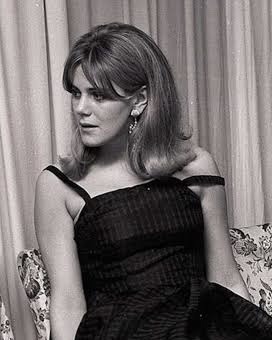


Happy 76th birthday to Queen Camilla of the United Kingdom!
Born on 17 July 1947 Camilla Rosemary Shand is Queen of the United Kingdom and the 14 other Commonwealth realms as the wife of King Charles III.
In 2005, Camilla married Charles in the Windsor Guildhall, which was followed by a televised Anglican blessing at St George's Chapel in Windsor Castle. From the marriage until her husband's accession, she was known as Duchess of Cornwall. Upon the death of Queen Elizabeth II on 8 September 2022, Charles became king with Camilla as queen consort. Their coronation took place at Westminster Abbey on 6 May 2023.
Camilla has two children from her marriage to Andrew Parker Bowles: Tom (born 18 December 1974), and Laura (born 1 January 1978).
26 notes
·
View notes